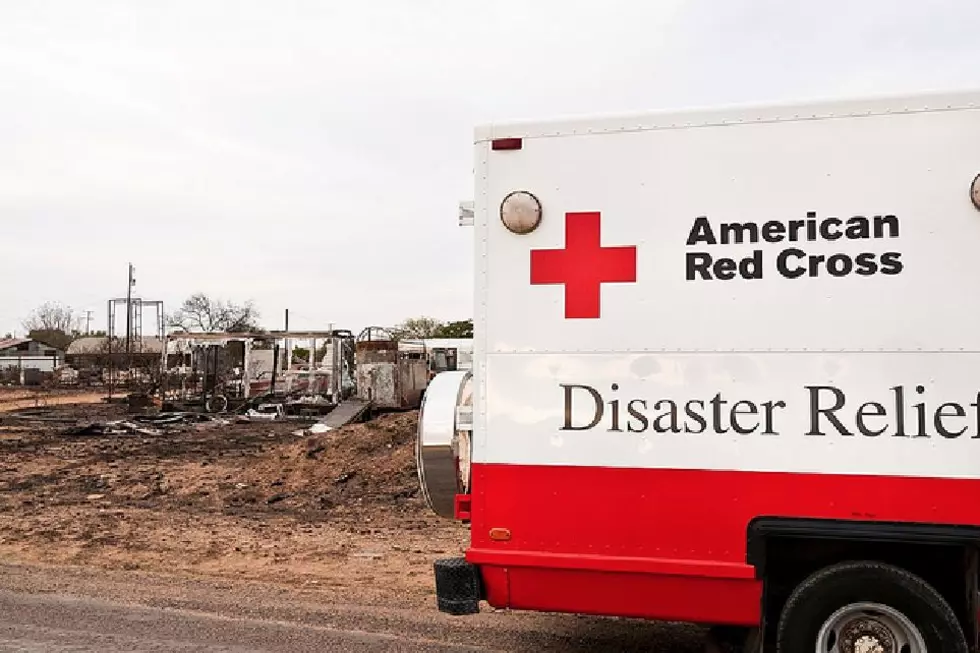
Laramie’s Own Macabre Urban Legend
It’s been a trope of ghost stories and scary movies for years, the haunting of a place that’s built on an old burial ground. One popular example is the 1982 film Poltergeist where a man, who works for a land developing company, finds that he and his family are haunted by the ghosts of the people who were buried on the land where he built his home.
History seems to have made a real life play of this, as long as history can record. No matter if you believe in ghosts or not, modern society is sometimes built over top of the final resting places of our predecessors. Just recently, archaeologists in Britain believe they have found the final resting place of King Richard III under a parking lot.
Not to be left out, the city of Laramie has it’s own stories of urban development and final resting places overlapping.
According to several articles from area newspapers over the years, and the notes of local historian, the late Gladys B. Beery, in the early days of Laramie, the broad expanse of prairie surrounding the town, then made mostly of tents and improvised buildings, supplied burial grounds, in that people were buried just about anywhere. But as settlers began to establish homes and businesses here, a proper cemetery was established east of town.
Beery notes that, at the time, the expansion of Laramie was expected to run north/south along the railroad. However, as this ended up not being the case, it was determined that the cemetery should be moved from it’s initial location to a new location to the northeast.
A 1977 article written by Maria Madigan, published in the Laramie Sunday Boomerang, explains just how hard it was to pin down the exact location of early Laramie burial sites. Madigan takes historic recollections of early Laramie residents as to where the cemetery was. In her article she discusses burial sites near what is now Advanced Auto Parts and Ace Hardware, somewhere northwest of the Laramie River, and one possible location near the territorial prison.
Gladys Beery’s notes place an established cemetery somewhere in the vicinity of 6th and 7th streets and she estimates that it was approximately where the Albany County Public Library is now. Madigan, on the other hand, puts the earliest established cemetery a little farther south, where the Laramie Plains Civic Center is now. Madigan points to various pieces of evidence such as headstones that have been excavated from the area.
One thing that both Beery and Madigan seem to agree on, however, is that as the town expanded, the burial sites (wherever they were) were moved to their new location.
The location of Laramie’s first cemetery is a guessing game, early newspapers like the Laramie Daily Sentinel seem to operate under the assumption that the towns people already knew where the cemetery was, and Madigan points out that early maps don’t show a specific cemetery location. However, overwhelming evidence leaves little to the imagination as to the cemetery’s next stop, before finally ending up in the current location at Greenhill Cemetery in east Laramie.
The headline of an article in the April 18th, 1940 edition of the Laramie Republican and Boomerang newspaper, below all the news of stemming from World War II in Europe, reads: “Third Grave Unearthed on UW Campus.” According to the article, which follows up on an article from the previous day about another grave that had been uncovered, sewer-line workers digging around, what is now, Knight Hall on the UW campus had found a rotted casket and inside were bones, scraps of clothing, and what is believed to be a poker chip.
Gladys Beery submitted a story about the cemetery to True West magazine, the article was later printed in her book Sinners & Saints- Tales of Old Laramie City. In the article Beery ascertains that when the cemetery was moved from what would eventually become the University Campus to its current location, some bodies were overlooked. Beery goes on to say that this was likely because frontier graves often had improvised or wooden markers that would blow away or rot, leaving the people underneath all but lost or forgotten.
The 1940s articles in the Republican Boomerang describe the coffins as being about two to three feet below the surface and the wooden coffins as being in poor repair. One article describes the rotten wood as offering little resistance to digging shovels. Maria Madigan cites these articles in her 1977 write-up on the cemeteries, saying that a total of five bodies were unearthed during Knight Hall’s construction. Further, sixteen years after the graves were uncovered near Knight Hall, another grave was unearthed when a clump of trees was removed to make way for the College of Nursing.
The final location of Laramie’s cemetery, where it is now, was decided upon in 1881 after land was procured for that purpose. The location, as it stands now, is in east Laramie just north of Fraternity Row and West of UW’s Basketball arena. Madigan says that moving the bodies to the current location was a slow task and, in some cases, the next of kin were unable to be reached and in other cases bodies were just outright lost. It isn’t too far of a stretch to think that some bodies were overlooked and left behind after the University Campus went up.
But what about now? Are there still bodies beneath campus?
Gladys Beery notes one special body that was never recovered from the cemetery’s second location, although the source of the story, even to Beery, seems to be up for dispute. In her article Beery describes that one of the people who helped to relocate the cemetery the first time it was moved was a spinner of tall tales by the name of “Old Jim” Sherrod. Beery writes that Sherrod described exhuming one casket that weighed, according to him, nearly 800 pounds. Upon opening the casket, Sherrod says he saw a body that was face down in the coffin that had turned entirely into blueish stone.
Allegedly the body belonged to that of Elias Kerr, a Laramie resident, and he had only died and was buried two years before he was exhumed by “Old Jim.” Beery writes that a coroners inquest was held as to what had happened to Elias Kerr that might have made his body petrify into stone. Unfortunately for the modern day researcher, those coroners records are no longer available and are presumed to be lost. This leaves many to wonder if Kerr had actually turned to stone or a stone-like substance, or if the whole thing was a story by “Old Jim.”
Beery does point out, however, that during the cemetery’s second move, no stone body was found, nor are there any burial records for Elias Kerr at Greenhill Cemetery, leaving her to wonder if Kerr is still somewhere underfoot at UW.
“Does he lie peacefully under another’s marker or in an unmarked grave in Greenhill Cemetery? Or does he lie somewhere beneath the busy campus of Wyoming’s University?” -Gladys B. Beery, Sinners & Saints- Tales of Old Laramie City
Note: This article would not have been possible without the help of the American Heritage Center at the University of Wyoming who provided various papers and notes, specifically clippings from the Clarice Whittenberg Collection and, through special arrangement, Gladys B. Beery’s notes for her article A Grave Matter, which was submitted to True West magazine and later printed in Sinnters & Saints- Tales of Old Laramie Town (available from High Plains Press).
More From KOWB 1290







